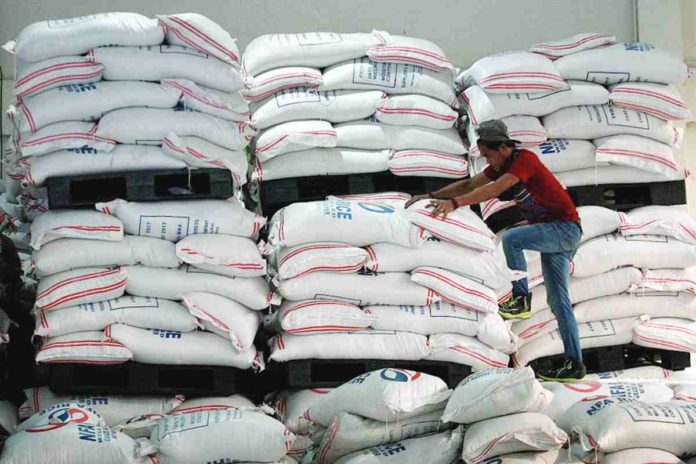
THE Department of Agriculture (DA) has asked President Ferdinand Marcos Jr. to grant the agency a buffer fund that it can use to buy rice and other basic commodities which will be later sold at lower prices.
DA assistant secretary and lawyer Paz Benavidez II made the announcement on Monday, April 29, during a public hearing conducted by the House agriculture and food committee as House Deputy Majority Leader Erwin Tulfo repeatedly asked the agency to make the National Food Authority (NFA) rice, which is the cheapest, available in the market.
Tulfo said the DA should find ways to do this, given that the Rice Tariffication Law (RTL) prohibits the NFA from selling the cheapest rice and only limits NFA’s mandate to keeping sufficient buffer stock of rice.
“The DA has this initiative using the Price Act. If you look at the Price Act, there’s Section 9 that allows the DA to have a buffer fund, for the DA to procure or import rice or any other agriculture prime commodities and basic necessities. The secretary already signed the implementing rules and regulations (IRR) [on us using a buffer fund for this],” Benavidez told lawmakers.
Benavidez said that once the President approves the said IRR, the DA will have the buffer fund that the agency can use to buy rice, corn and other sensitive products for stockpiling as provided by DA’s mandate.
She said these stockpiles of rice and corn, among others, will then be released to Kadiwa stores and other retail markets in the event that there is price manipulation.
“We will have the buffer fund, and we will make sure that sensitive products, including rice and corn. We cannot directly involve the NFA [in selling rice] because there is still a question whether the NFA can sell, but we included [in our prepared IRR] that the NFA can sell rice to Kadiwa [booths] on the condition of the Price Act… to address unreasonable prices and address hoarding and price manipulation,” Benavidez said.
“The condition provided by the Price Act is if there is unreasonable pricing. Because for the NFA, their buffer stock is for emergencies, calamities, not manipulation of prices. It is stated there [in the IRR] that upon determination of the local price council, the DA can release the stockpiles for sale, sa mababang halaga, to stabilize the price,” she said.
She added: “The DA has this [IRR prepared], subject to the approval of the President. That is what we are doing right now.”
Tulfo welcomed the DA’s action but maintained that the NFA’s old mandate of selling the cheapest rice in the market should be restored as this is what minimum wage earners and their families look for. (GMA Integrated News)







